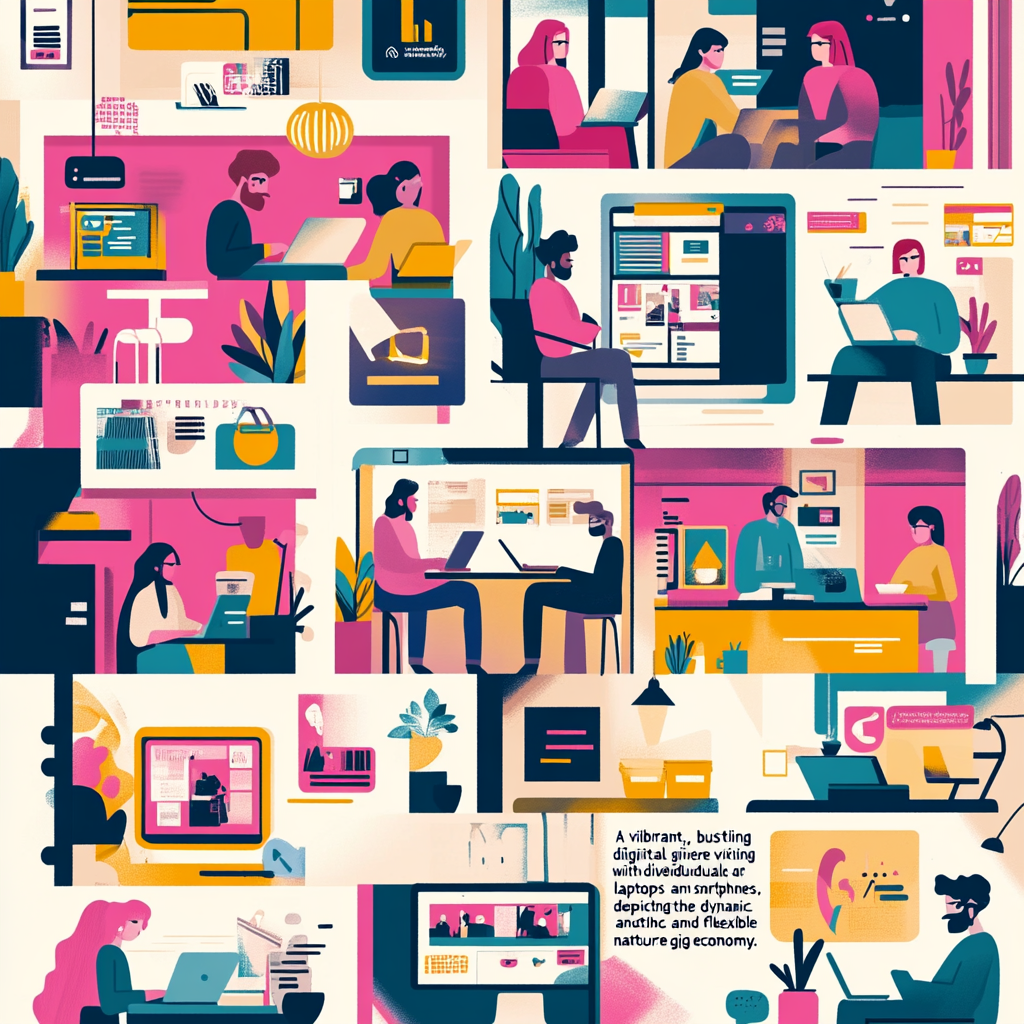
We Value Your Privacy
We use cookies to ensure basic functionalities and to enhance your experience. You can accept or decline cookies, or manage your preferences.
Privacy Policy | Cookies Policy
Discover the impact of the gig economy on American workers. Uncover insights into benefits, challenges, and the future of this evolving sector.
5min read
The gig economy, characterized by short-term, flexible jobs often facilitated through digital platforms, has fundamentally altered the American labor market. Traditionally, workers sought long-term employment with benefits such as health insurance and retirement plans. However, the rise of platforms like Uber, Lyft, and TaskRabbit has enabled a surge in freelance and contract-based work. According to the Bureau of Labor Statistics, over 36% of U.S. workers are involved in the gig economy in some capacity, reflecting a significant shift from traditional employment models. This evolution is driven by various factors, including the desire for flexible working hours, the ability to pursue multiple income streams, and the technological advancements that facilitate remote and freelance work.
Gig work offers several advantages that attract a diverse workforce. Flexibility stands out as a primary benefit, allowing individuals to balance work with personal commitments. This is particularly appealing to parents, students, and those with other responsibilities. Additionally, gig work can serve as a supplementary income source, helping people manage economic uncertainties. According to a survey by Gallup, 64% of gig workers appreciate the autonomy their roles provide. Moreover, the gig economy fosters entrepreneurship, enabling individuals to turn their skills and hobbies into profitable ventures.
Despite the numerous benefits, gig work also presents several challenges. One major concern is the lack of job security and benefits. Unlike traditional employment, gig workers do not have access to employer-sponsored health insurance, retirement plans, or paid leave. This can lead to financial insecurity, particularly in times of economic downturn. Another issue is the potential for exploitation, as some platforms may impose unfair working conditions or low wages. According to the Economic Policy Institute, gig workers earn 58% less than traditional employees on average. Furthermore, the absence of labor union protections leaves gig workers vulnerable to unfair treatment and wage theft.
Technology plays a pivotal role in the gig economy, serving as the backbone for its expansion. Digital platforms like Upwork, Fiverr, and DoorDash connect workers with clients and customers, streamlining the job search and task assignment processes. These platforms use algorithms to match workers with suitable opportunities, enhancing efficiency and productivity. Additionally, mobile applications and cloud-based tools allow gig workers to manage their tasks, track earnings, and communicate with clients remotely. However, the reliance on technology also raises concerns about data privacy and the potential for algorithmic biases that could disadvantage certain workers.
The rapid growth of the gig economy has prompted calls for regulatory frameworks to protect gig workers. Policymakers and labor advocates argue for measures that ensure fair wages, benefits, and working conditions. Some states, like California, have enacted legislation such as Assembly Bill 5 (AB5), which aims to reclassify gig workers as employees rather than independent contractors. This shift could grant workers access to benefits and protections similar to those enjoyed by traditional employees. However, there is still ongoing debate about the best approach to regulating the gig economy, balancing the need for worker protections with the desire to maintain the flexibility that gig work offers.
The future of the gig economy in the United States remains uncertain but promising. As the market continues to evolve, it is likely that new models and platforms will emerge, offering innovative solutions to existing challenges. Additionally, ongoing technological advancements, such as artificial intelligence and blockchain, could further revolutionize gig work by enhancing transparency, security, and efficiency. However, achieving a sustainable gig economy will require collaboration between policymakers, businesses, and workers to ensure fair and equitable conditions. The key lies in finding a balance that preserves the benefits of gig work while addressing its inherent challenges.
The gig economy refers to a labor market characterized by short-term, flexible jobs, often facilitated through digital platforms. Examples include freelance work, ride-sharing, and task-based services.
Benefits of gig work include flexibility, the ability to balance work with personal commitments, and opportunities for entrepreneurship. Gig work can also serve as a supplementary income source.
Gig workers often face challenges such as lack of job security, absence of employer-sponsored benefits, potential for exploitation, and lower average earnings compared to traditional employees.
Technology has significantly impacted the gig economy by providing digital platforms for job matching, task management, and communication. However, it also raises concerns about data privacy and algorithmic biases.
Regulatory measures for gig workers include legislation like California's AB5, which aims to reclassify gig workers as employees, granting them access to benefits and protections similar to traditional employees.
The future of the gig economy remains promising, with potential for new models and platforms to emerge. However, achieving a sustainable gig economy will require collaboration between policymakers, businesses, and workers to address its challenges.